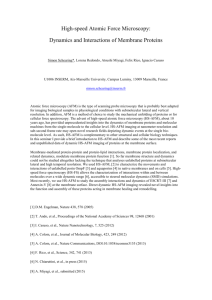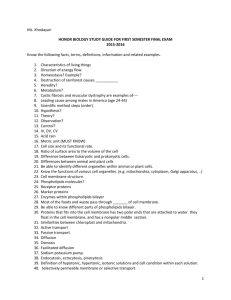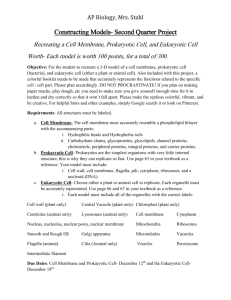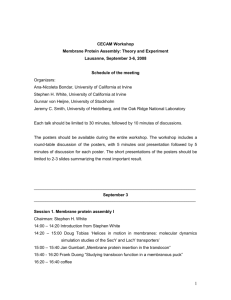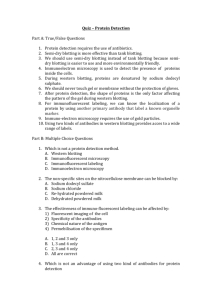High-speed Atomic Force Microscopy: Dynamics and Interactions of
advertisement
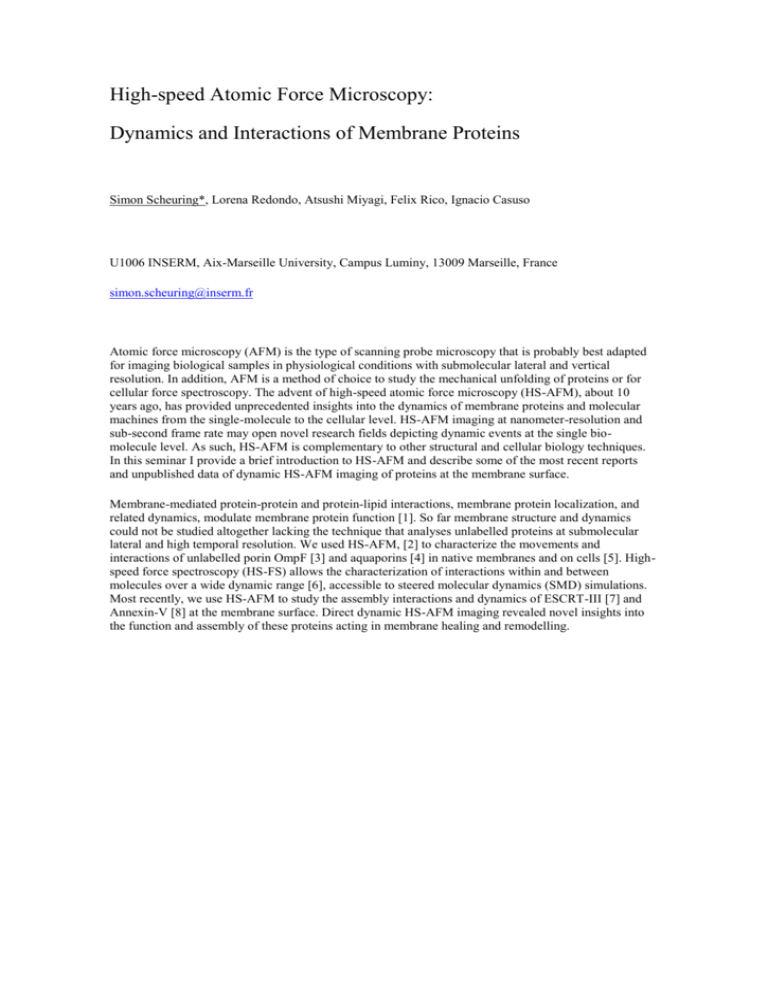
High-speed Atomic Force Microscopy: Dynamics and Interactions of Membrane Proteins Simon Scheuring*, Lorena Redondo, Atsushi Miyagi, Felix Rico, Ignacio Casuso U1006 INSERM, Aix-Marseille University, Campus Luminy, 13009 Marseille, France simon.scheuring@inserm.fr Atomic force microscopy (AFM) is the type of scanning probe microscopy that is probably best adapted for imaging biological samples in physiological conditions with submolecular lateral and vertical resolution. In addition, AFM is a method of choice to study the mechanical unfolding of proteins or for cellular force spectroscopy. The advent of high-speed atomic force microscopy (HS-AFM), about 10 years ago, has provided unprecedented insights into the dynamics of membrane proteins and molecular machines from the single-molecule to the cellular level. HS-AFM imaging at nanometer-resolution and sub-second frame rate may open novel research fields depicting dynamic events at the single biomolecule level. As such, HS-AFM is complementary to other structural and cellular biology techniques. In this seminar I provide a brief introduction to HS-AFM and describe some of the most recent reports and unpublished data of dynamic HS-AFM imaging of proteins at the membrane surface. Membrane-mediated protein-protein and protein-lipid interactions, membrane protein localization, and related dynamics, modulate membrane protein function [1]. So far membrane structure and dynamics could not be studied altogether lacking the technique that analyses unlabelled proteins at submolecular lateral and high temporal resolution. We used HS-AFM, [2] to characterize the movements and interactions of unlabelled porin OmpF [3] and aquaporins [4] in native membranes and on cells [5]. Highspeed force spectroscopy (HS-FS) allows the characterization of interactions within and between molecules over a wide dynamic range [6], accessible to steered molecular dynamics (SMD) simulations. Most recently, we use HS-AFM to study the assembly interactions and dynamics of ESCRT-III [7] and Annexin-V [8] at the membrane surface. Direct dynamic HS-AFM imaging revealed novel insights into the function and assembly of these proteins acting in membrane healing and remodelling.
